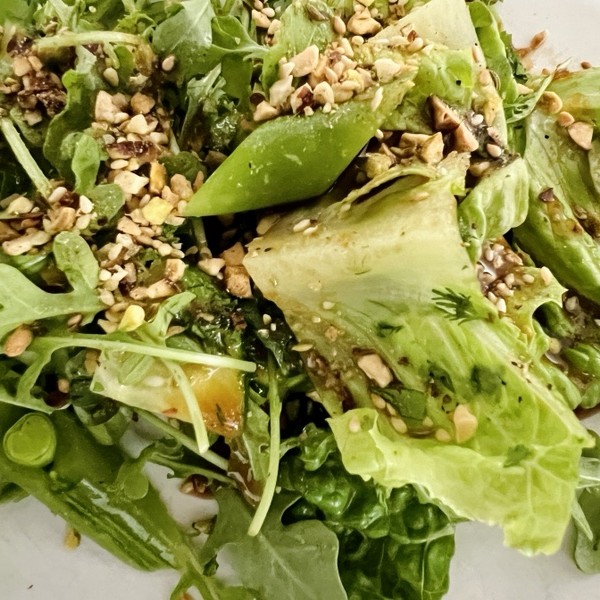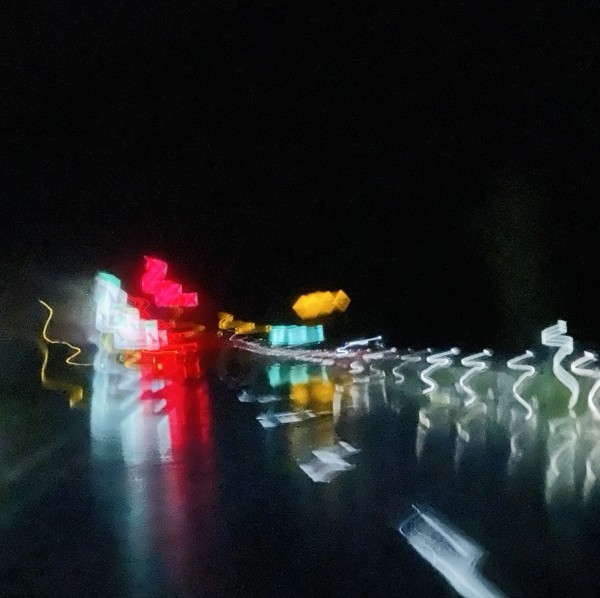02023-11-12 | Food, Rain Music, Travel
Arrived in Kyoto by Shinkansen. It’s the best way to travel. I could go on and on about train travel versus planes but that’s for another time.
Walked around and found a little shop that served udon in dashi broth. I noticed another customer at the bar drinking Sapporo and ordered a bottle for myself. Maybe I was thirsty but my immediate impression was that Sapporo beer brewed in Japan is so much better than what Sapporo makes in North America.
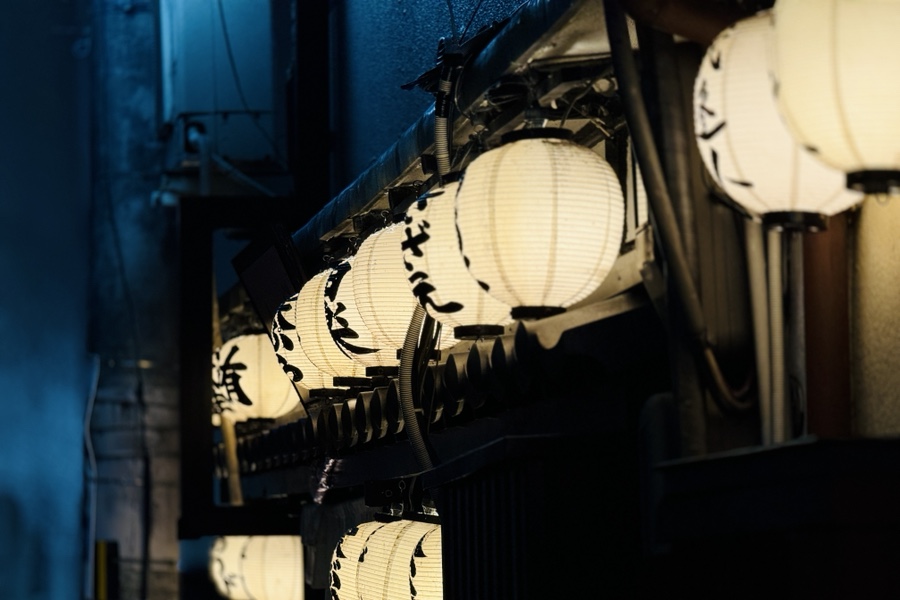 I love taking photos at night with the iPhone and these small Kyoto streets have lots of great vistas.
I love taking photos at night with the iPhone and these small Kyoto streets have lots of great vistas. 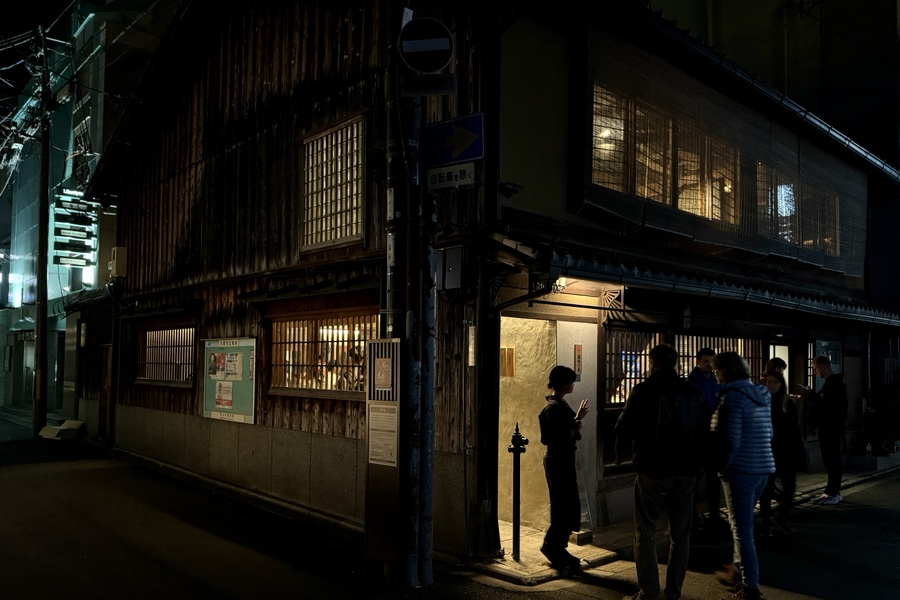 Posted tick tock (blush) to Backstage. It’s the first track on the album Rain Poems and a good entrance into the record. Medium tempo, interlocking rhythm guitars, albeit no strumming—there is no strumming on the entire album, Jon’s upright bass, and water drops that sound like a clock in the chorus. This morning I made coffee using the Blue Bottle instant espresso which I added to a cup of water with milk that I heated up in a microwave. Improvisation! Not a bad cup of coffee at all!
Posted tick tock (blush) to Backstage. It’s the first track on the album Rain Poems and a good entrance into the record. Medium tempo, interlocking rhythm guitars, albeit no strumming—there is no strumming on the entire album, Jon’s upright bass, and water drops that sound like a clock in the chorus. This morning I made coffee using the Blue Bottle instant espresso which I added to a cup of water with milk that I heated up in a microwave. Improvisation! Not a bad cup of coffee at all! 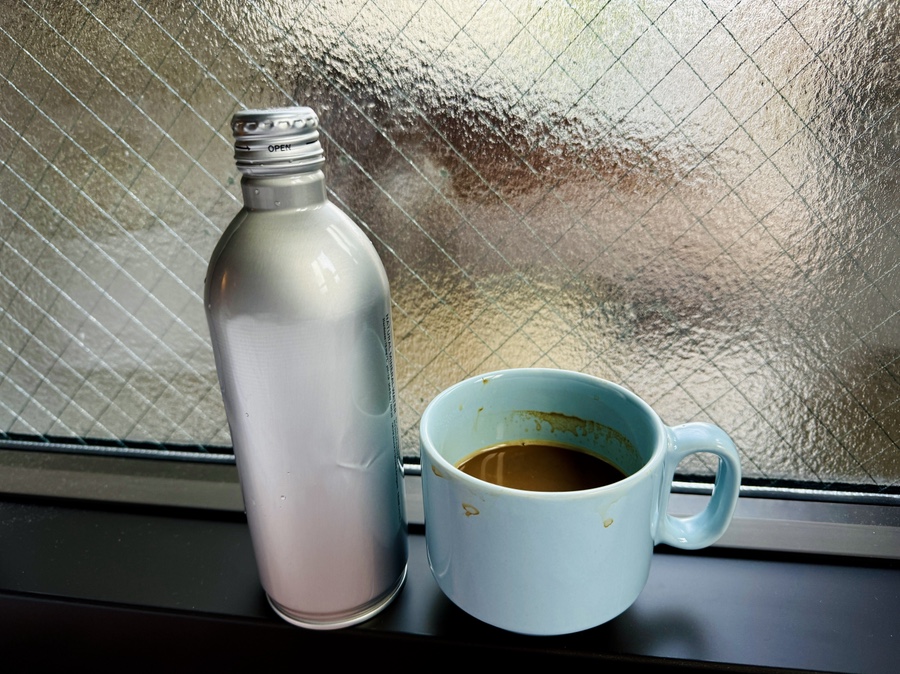
02023-09-16 | Food, Photos
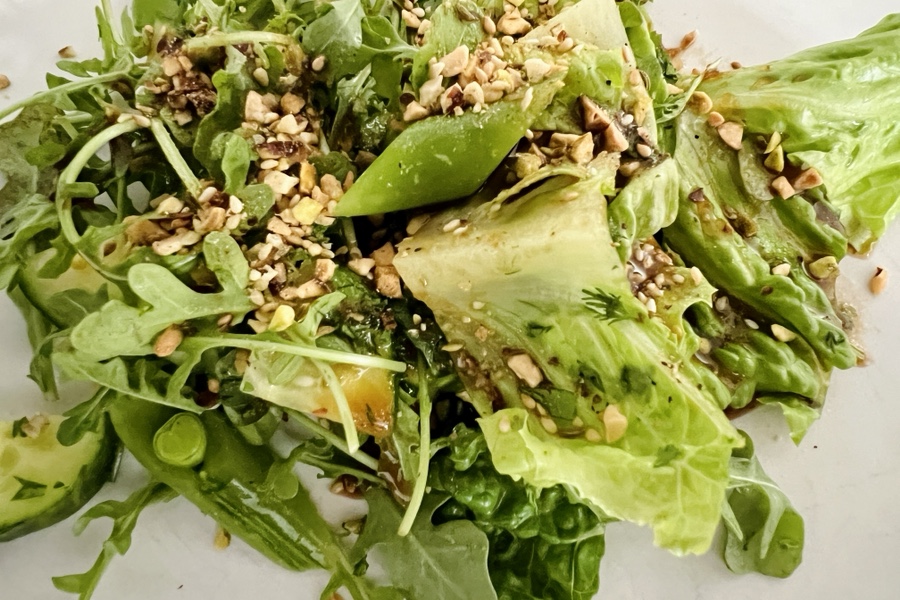
A green salad with dukkah. Dukkah is on my list of perfect food compliments. I use the word compliments because they aren’t condiments. My short list contains pesto (Italian), hummus (Arabian), gomashio (Japanese), guacamole (Mexican), and dukkah. My dukkah recipe is Egyptian. Last week I made an Indian-Californian pesto, w peanuts instead of pine nuts and cilantro and toasted coriander seeds. So funny when European or Asian friends find out that Americans use two different names for the same herb, depending on whether it is fresh or dried!!
02023-07-05 | Art, Book, Food
The novel The Dervish House by Ian McDonald features a hunt for a mellified man.
Mellified man – Wikipedia
I finished Hopeland a while ago and enjoyed it very much. So I started reading an older novel by McDonald, from 2010, called The Dervish House. I am digging this one, too, and learned about the Mellified Man. The book describes the process at length, but the above linked entry in Wikipedia will tell you enough. What a wild and crazy idea? Did anyone actually do this?
Staying with the honey theme, here is something I saw on Colossal: Honeycomb Swells Across Ava Roth’s Embroidered Works Made in Collaboration with Bees
And I remember seeing this vase at the MoMA years ago:
The Honeycomb Vase “Made by Bees”:
Libertíny constructed vase-shaped beehive scaffolds (removed at the end of the process) and then let nature take its course: a group of bees went to work building a hive, layer by layer, in the same shape as the scaffold. The work took from two to ten days, depending on the weather, the season, the size of the colony, and its need to expand. It took one week and approximately forty thousand bees to complete this particular Honeycomb Vase. The process, which the designer calls “slow prototyping” in an ironic counterpoint to today’s rapid manufacturing technologies, poetically brings a natural phenomenon full circle, starting with flowers, which nourish bees and enabled them to produce the vase, and ending with a vessel that is meant to contain flowers.
02023-06-30 | Environment, Food
Gas stoves pollute homes with benzene, emitting more of the known carcinogen than present in secondhand smoke, according to a new study.
– Scientific American
I thought I would never enjoy cooking on an electric stove. If you are considering the switch, I can tell you that it works very well but it takes some time getting used to. I wouldn’t go back.
02023-06-14 | Food, Photos, Trees
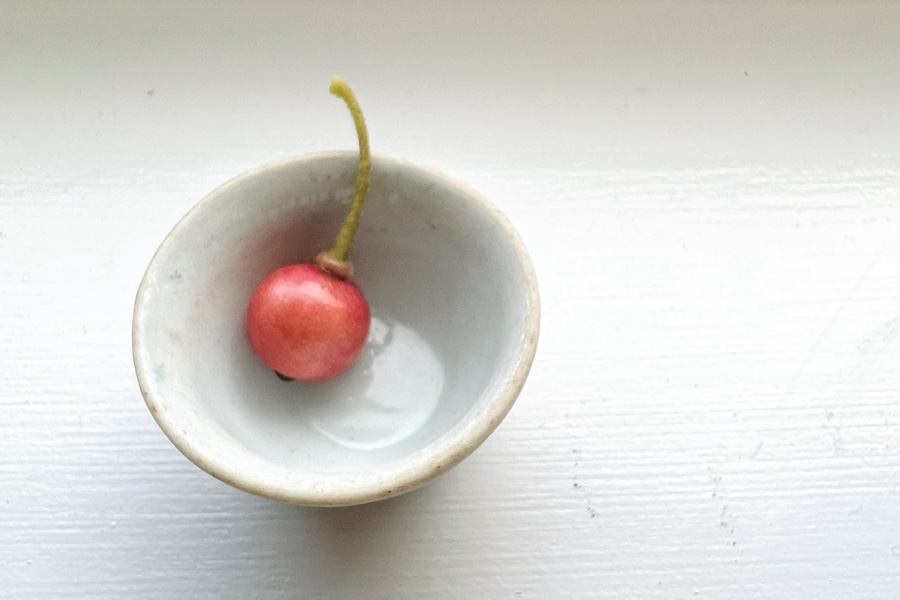
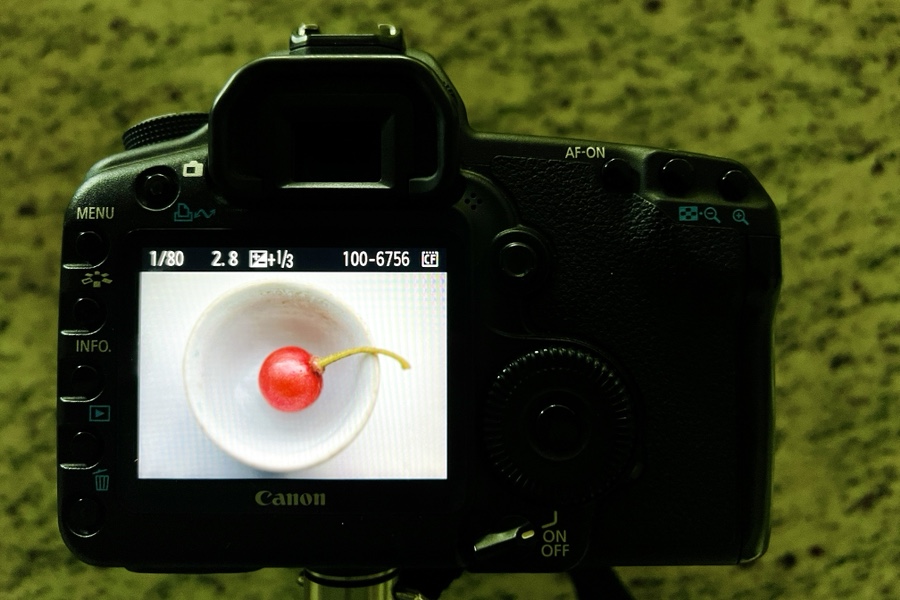
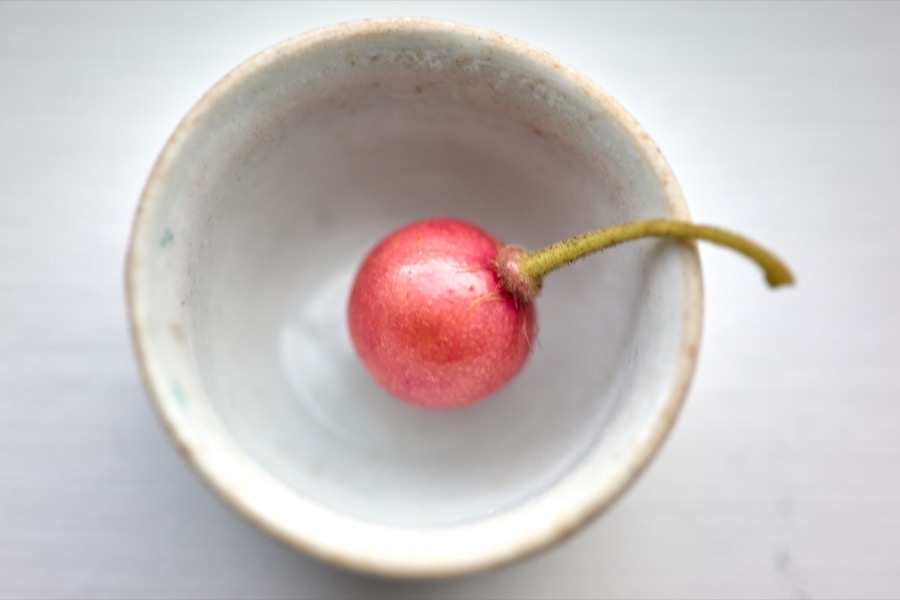
Fruit from a Jamaica Cherry tree. The color is delicate, a pink rather than red. The iPhone (top) did a good job. I didn’t hold the Canon (bottom) steady enough for the 1/80 of a second exposure.
Jamaica Cherry is called Pão de Seda in Portugal and Pau de Seda in Brazil. Silk Bread vs Silk Stick. Both are rather inventive names for this fruit. It also begs the question: is a bread stick called Pão Pau?? There is long list of vernacular names at the wikipedia link. I haven’t tried the fruit yet but hear that the English names Cotton Candy Berry and Strawberry Tree are somewhat indicative of the flavor.
PS: Google translates Pão Pau as “Dick Bread” but Pau Pão as “Stick Bread”. Use wisely.
02023-05-06 | Food, Music
When a person is offered lots of food that they know they love, do they still try strange and unfamiliar food? When hungry, doesn’t one prefer to eat what one knows rather than try something that looks and smells… unusual? Isn’t the same true for streamed music? How often do we listen to favorite albums, or our own playlists, rather than explore unknown music?
One great element of travel used to be the immersion into a food culture. You traveled somewhere and ate the local food. There was no choice and that was all that was available. A few decades ago Italy only had Italian food – as if that could be a hardship because Italian cuisine is really great. This is no longer true, of course, and nowadays you can observe tourists going to the familiar McDonalds near the Pantheon in Rome, rather than exploring the Italian restaurants in the area. Or going to an Asian restaurant in Milan. The same is true almost everywhere in the world.
We are cocooned inside a bubble of our own preferred music, food, clothing, atmosphere, etc. etc. The same is true for opinions. No matter what our opinion, however unusual, we can always find places where this opinion will be reenforced. Social Media provides. Perhaps we can say we are choking on our own preferences which, in the process, are becoming narrower and narrower.
Except for public radio and college stations, all commercial radio has a cultural bandwidth of maybe five degrees. Everything sounds the same. Everything is constantly repeated. Every hour sounds similar to the last. Some people were shocked when AI created a perfect simile of a Drake song… why?
I don’t have a solution. Eat local food, wherever. Avoid chain-anything. Have Shazam at the ready to discover the music you might hear in the Uber to the airport, or in a local shop – I keep Shazam accessible on the Apple Watch, to be immediately engaged at a whim. Follow RSS blog feeds by people with different musical tastes… that’s how I discovered the Bandcamp page from my earlier post about Voices + Paintings.
What are some of the things you do to discover food, music, etc.?
 I love taking photos at night with the iPhone and these small Kyoto streets have lots of great vistas.
I love taking photos at night with the iPhone and these small Kyoto streets have lots of great vistas.  Posted tick tock (blush) to Backstage. It’s the first track on the album Rain Poems and a good entrance into the record. Medium tempo, interlocking rhythm guitars, albeit no strumming—there is no strumming on the entire album, Jon’s upright bass, and water drops that sound like a clock in the chorus. This morning I made coffee using the Blue Bottle instant espresso which I added to a cup of water with milk that I heated up in a microwave. Improvisation! Not a bad cup of coffee at all!
Posted tick tock (blush) to Backstage. It’s the first track on the album Rain Poems and a good entrance into the record. Medium tempo, interlocking rhythm guitars, albeit no strumming—there is no strumming on the entire album, Jon’s upright bass, and water drops that sound like a clock in the chorus. This morning I made coffee using the Blue Bottle instant espresso which I added to a cup of water with milk that I heated up in a microwave. Improvisation! Not a bad cup of coffee at all! 





